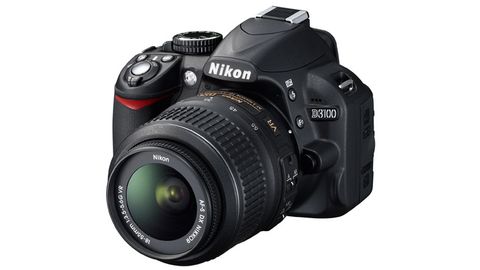TechRadar Verdict
Pros
- +
Live View a welcome addition
- +
HD video capture
- +
Great sensor and processor
- +
Robust build
- +
Decent value for money
Cons
- -
Not quite pro-standard build quality
Why you can trust TechRadar
Make no mistake, the Nikon D3000 was a seriously good entry-level camera, fully justifying its position as Europe's top-selling DSLR for the first half of this year.
But all good things come to an end and, more recently, the D3000 was showing its age with a complete lack of Live View, video capture facilities and a comparatively low-res 10.2MP CCD sensor.
The D3100 is a radical upgrade, based on a brand-new 14.2MP CMOS sensor that, in resolution terms, outstrips most of Nikon's current semi-pro and fully professional cameras, including the D300s, D700 and D3s.
The Nikon D3100 has a smarter brain than its predecessor, in the shape of a revamped EXPEED 2 image processor, which promises enhanced image quality and a greater sensitivity range. Indeed, while the D3000 offered ISO 100-1600 in its standard range, the Nikon D3100 boosts this to ISO 100-3200, with two extended modes that raise the bar to ISO 6400 and 12800 respectively.
Other new features include Live View, which comes complete with a Scene Auto Selector function that automatically selects the optimum picture mode for the subject being photographed, as well as offering normal-area, wide-area, face-priority and continuous subject-tracking autofocus. More impressively, continuous autofocus is also available in movie capture mode, the D3100 boasting full 1080p high-def at 24fps and 720p at 24,25 or 30fps.
You can also apply basic in-camera edits to movie clips, for example cutting scenes or saving individual frames as still images.
Getting back to the main job of shooting stills, there's a veritable feast of in-camera retouching features, including after-shot D-Lighting adjustments for controlling dynamic range, red-eye reduction, trimming, straightening, distortion correction (also available while shooting), perspective control, colour balance and a range of filter effects.
Also at the shooting stage, the Nikon D3100 also inherits chromatic aberration correction from other recent Nikon cameras, which is highly effective at flattering the performance of lenses where colour fringing is often a problem, like with the Nikon 18-200mm VR.

Wear OS 5: what we want to see, and all the leaks so far

The obscure little PC that wanted to be a big NAS — super compact Maiyunda M1 doesn't cost that much, offers up to 40TB SSD storage, runs Windows and has 4 Gigabit Ethernet ports

Image site Abload going offline reminds me of how much online content we've permanently lost
